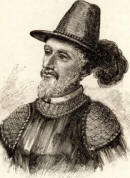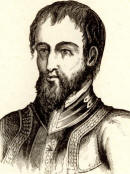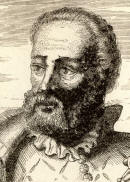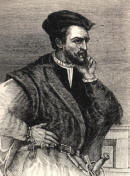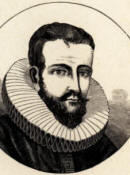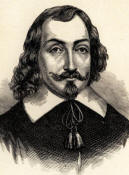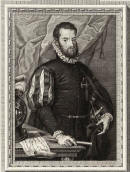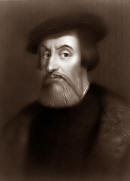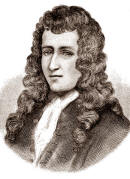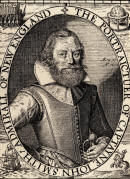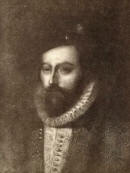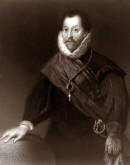Sir Francis Drake
|
|
This Site:
|
Map Showing Route of Sir Francis Drake's Voyage Circumnavigating the GlobeHe had sailed northward as high, probably, as latitude 46°, or near the boundary between Oregon and the British possessions, and possibly he went farther north, for he encountered very cold weather in very June, and turned back. Drake entered a fine bay and landed his stores, preparatory to repairing his ship; and he remained on the coast fully a month, hospitably treated by the natives. Late in June he was visited by the king of the country and his official attendants. The former was dressed in rabbit-skins — a peculiar mark of distinction. His officers were clad in feathers, and his other followers were almost naked. Drake received them cordially. The sceptre-bearer and another officer made speeches, after which the natives indulged in a wild dance, in which the women joined. Then Drake was asked to sit down, when the king and his people desired him to "become the king and governor of the country." Then the king, singing with all the rest, set a crown upon Drake's head, and saluted him as Hioh, or sovereign. Drake accepted the honor in the name of Queen Elizabeth. After taking possession of the country he erected a wooden post, placed upon it a copper plate, with an inscription, on which was asserted the right of Queen Elizabeth and her successors to the kingdom, with the time of his arrival there, and a statement of the voluntary resignation of the country to the English by the king and people. On the same plate were engraved the portrait and arms of the Queen and the navigator. Then he sailed for the Molucca Islands. It is believed that Sir Francis Drake entered the "Golden Gate" of San Francisco Bay, and that near its shores the ceremony of his coronation took place. Fearing encounters with the Spaniards on his return with his treasure-laden vessels, Drake sought a northeast passage to England. Met by severe cold, he turned back, crossed the Pacific to the Spice Islands, thence over the Indian Ocean, and, doubling the Cape of Good Hope, reached England in November, 1580. The delighted Queen knighted Drake, who afterwards plundered Spanish towns on the Atlantic coasts of America; and, returning, took a distressed English colony from Roanoke Island and carried them to England. In command of a fleet of thirty vessels, in 1387, he destroyed 100 Spanish vessels in the harbor of Cadiz; and from a captured vessel in the East India trade the English learned the immense value of that trade and how to carry it on. As vice-admiral, Drake materially assisted in defeating the Spanish Armada in 1588; and the next year he ravaged the coasts of the Spanish peninsula. After various other exploits of a similar kind, he accompanied Hawkins to the West Indies in 1595. Hawkins died at Porto Rico, and Drake, in supreme command, gained victory after victory over the Spaniards. He died near Puerto Bello, Dec. 27, 1595, and was buried at sea.
|
||||||||||||||||||||||||
|
|
||
|
|
Site Copyright 2003-2018 Son of the South. For Questions or comments about this collection, contact: paul@sonofthesouth.net |
|
|
Are you Scared and Confused? Read My Snake Story, a story of hope and encouragement, to help you face your fears. |
||
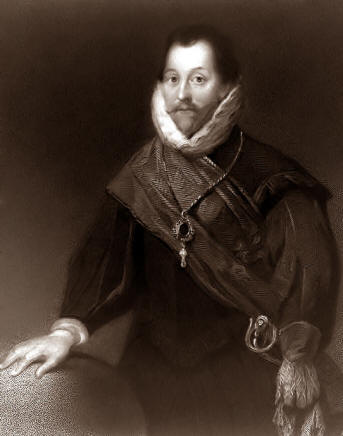 Drake,
Sir FRANCIS, navigator; born near Tavistock, Devonshire,
England, between 1539 and 1546. Becoming a seaman in early youth, he
was owner and master of a ship at the age of eighteen years. After
making commercial voyages to Guinea, Africa, he sold her, and
invested the proceeds in an expedition to Mexico, under Captain
Hawkins, in 1567. The fleet was nearly destroyed in an attack by the
Spaniards at San Juan de Ulloa (near Vera Cruz) , and Drake returned
to England stripped of all his property. The Spanish government
refused to indemnify him for his losses, and he sought revenge and
found it. Queen Elizabeth gave him a commission in the royal navy,
and in 1572 he sailed from Plymouth with two ships for the avowed
purpose of plundering the Spaniards. He did so successfully on the
coasts of South America, and returned in 1573 with greater wealth
than he ever possessed before. Drake was welcomed as a hero; he soon
won the title honorably by circumnavigating the globe. He had seen
from a mountain on Darien the waters of the Pacific Ocean, and
resolved to explore them. Under the patronage of the Queen, he
sailed from Plymouth in December, 1577; passed through the Strait of
Drake,
Sir FRANCIS, navigator; born near Tavistock, Devonshire,
England, between 1539 and 1546. Becoming a seaman in early youth, he
was owner and master of a ship at the age of eighteen years. After
making commercial voyages to Guinea, Africa, he sold her, and
invested the proceeds in an expedition to Mexico, under Captain
Hawkins, in 1567. The fleet was nearly destroyed in an attack by the
Spaniards at San Juan de Ulloa (near Vera Cruz) , and Drake returned
to England stripped of all his property. The Spanish government
refused to indemnify him for his losses, and he sought revenge and
found it. Queen Elizabeth gave him a commission in the royal navy,
and in 1572 he sailed from Plymouth with two ships for the avowed
purpose of plundering the Spaniards. He did so successfully on the
coasts of South America, and returned in 1573 with greater wealth
than he ever possessed before. Drake was welcomed as a hero; he soon
won the title honorably by circumnavigating the globe. He had seen
from a mountain on Darien the waters of the Pacific Ocean, and
resolved to explore them. Under the patronage of the Queen, he
sailed from Plymouth in December, 1577; passed through the Strait of
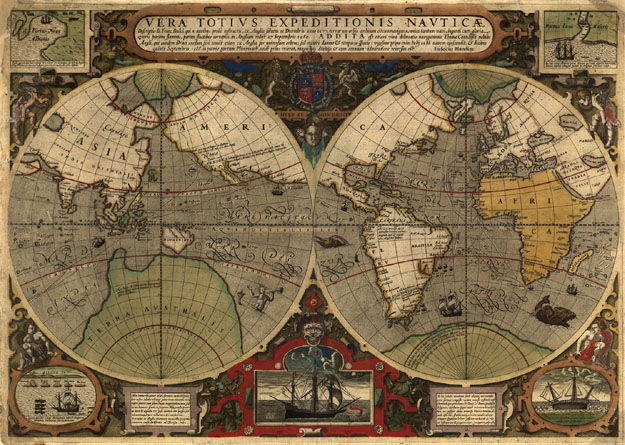
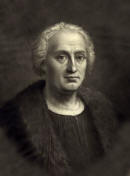
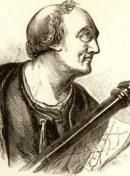
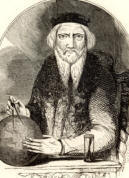
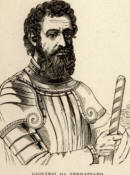
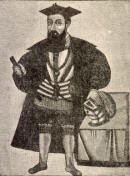
_small.jpg)
